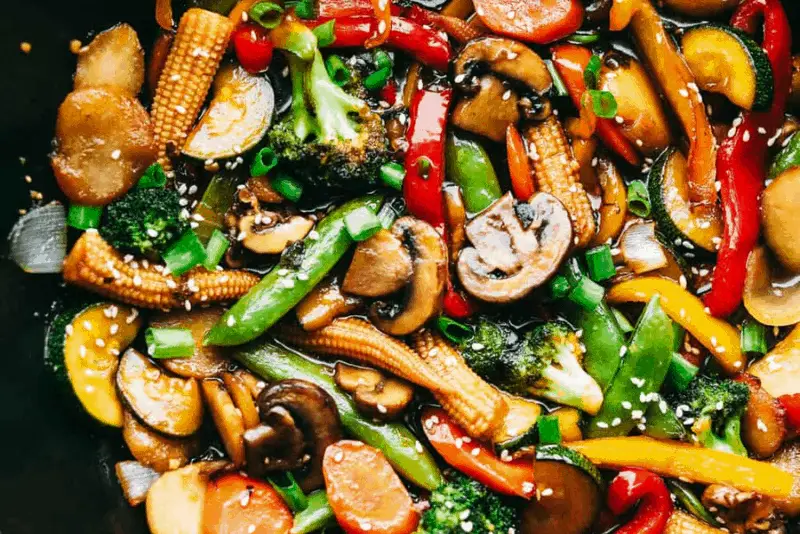Which Country Takes the Crown for Consuming the Most Fries?
There’s no question that fries are a beloved dish around the world. Whether it’s paired with a burger, as part of a hearty poutine dish, or simply snacked on their own, people can’t seem to get enough of these crispy little sticks of potato goodness. But when it comes down to it, which country reigns supreme in terms of fry consumption? In this article, we’ll take an in-depth look at the history and development of fries, examine which countries produce and consume the most potatoes, explore what factors shape fry consumption patterns, and discuss future developments in the potato industry and consumption trends.
A Brief History of Fries
The origin story of fries is murky at best. Many lay claim to inventing this beloved dish- from France to Belgium to Spain – but most scholars agree that it’s an evolution that took place over time. Potatoes were first introduced to Europe in the 1500s from South America but were initially viewed with suspicion and rejected on grounds of being potentially poisonous. By the late 1600s, however, they had gained popularity across various European countries.
The French Revolution in 1789 saw millions of aristocrats flee France, many of whom ended up settling in other cities across Europe such as London. Among these fleeing aristocrats were chefs who brought the French recipe for ‘frites’ (French fries) with them. This helped to introduce the dish beyond French borders and contribute to its widespread popularity worldwide today.
The Global Obsession with Fries
The love affair with fries has only grown stronger over the years, with the dish now being enjoyed by people from all walks of life and consumed across cultures worldwide. While primarily made from potatoes, fries can be prepared and enjoyed in various ways. Some people prefer thin and crispy shoestring fries, while others prefer thicker steak fries. Different seasonings, dipping sauces, and cooking methods are also used to add variety and flavor.
Famous fast-food chains like McDonald’s and Burger King made the dishing accessible to people of all ages and backgrounds. Fries have also become a staple side dish in many cultures, such as the American diner experience or the British chips and fish pairing.
Examining Potato Production and Consumption
The potato specifies belong to the flowering plant family known as the Solanaceae. Potatoes are widely cultivated throughout the world today, with China now leading in both potato production (88.6 million tonnes) and consumption, followed by India (43.4 million tonnes) then Russia (31.1 million tonnes). Potatoes are essential food equally for wealthy developed nations as well as developing countries due to their quantity per hectare, which equals higher yields resulting from increased productivity.
In terms of potato consumption per capita, Belarus currently comes out on top at 184 lbs (83.2 kg) per person annually, followed by Latvia at 183 lbs (82.7 kg) per person annually then Kazakhstan at 182 lbs (82.3 kg) per person annually.
Leading Producers and Consumers of Fries
While it may be challenging to pinpoint precise numbers on fry consumption globally, we can take a closer look at countries that have a well-deserved reputation for their fry-loving ways:
Europe
- Belgium: Belgian’s claim that fries were invented within its borders- a recognition since the precise technique of deep-frying originated there in the late 1600s. The Belgian pommes frites are thick-cut shaped into a chunky rectangle and served with an extensive range of toppings.
- Netherlands: Bitterballen, Brabants Lekkerste, and Villa ArenA fries are among the most famous fast foods in the country. With its love for frinkandel, kroket, and all kinds of fried snacks, fries are often eaten as an accompaniment to dinner or as a snack between for many Dutch households.
- The United Kingdom and Ireland: Chips! As Brits would refer to French fries, it would be hard not to appreciate their love for chips- with salt and vinegar of course!
North America
- United States: French fries have become a staple side dish in America. Americans love their fries crispy on the outside, soft on the inside. Top fast-food restaurants like McDonald’s sell over 9 million pounds of their fries every day making them one of the most prominent buyers of potatoes worldwide.
- Canada: Since the creation of poutine more than half-a-century ago, fries in Canada are usually paired with gravy and cheese curds. The dish has since then spread worldwide, with many American states adding it to menus.
Asia
- China: Given China has an enduring history with agriculture and cultivation, their love for potato consumption isn’t surprising- The Chinese use potatoes extensively in their cuisine – boiled, mashed, fried in dishes such as Dim Sum.
- India: India may not lead in potato production per se; there is a huge demand for potatoes used as snacks – like Samosas or as a side dish such as Batata Vada.
South America
- Peru: Given that Peru is the genetic origin of the potato, it is no surprise that it is the base of many Peruvian dishes. Peru offers some unique takes on fries with dishes like ‘cancha’, roasted corn kernels served as snacks with pollo a la brasa.
Factors Shaping Consumption Patterns
Cultural Factors
Cultural identity and heritage play a significant role in shaping eating habits. Different cultural cuisines and food traditions lead to varying cooking methods, ingredients, and spices, which ultimately result in a vast array of culinary delicacies worldwide.
Economic Factors
Income levels and affordability significantly impact fry consumption patterns. A country’s GDP per capita will affect what people eat, while more developed countries tend to offer more extravagant culinary varieties than developing countries.
Health Concerns
Fries may be delicious, but they are often also viewed as an unhealthy food choice due to high levels in salt, fat, and calories. Health concerns have prompted many consumers across the world to cut back on their fry intake, seek healthier alternatives or even change their diet entirely.
Environmental Impact
Largescale agriculture is concerning from an environmental standpoint since it can create environmental issues such as deforestation or result in lower soil quality due to excessive fertilization.
Future Developments in Potato Industry & Consumption Trends
Advancements in Agricultural Technology
The potato industry has managed to stay vibrant through research and development initiatives continuously, resulting in improved cultivation methods, higher yield per hectare, cost reduction, and technological advancement. The rate of improvements has made it possible to cultivate potatoes in areas with less fertile soil and keep the process eco-friendly.
Alternatives to Traditional Frying Methods
With the health perspective taken into consideration globally, there are several alternative cooking techniques available today. Baking & Roasting for instance – is increasingly becoming popular as a healthier option. Alternatives such as air fryers and the use of different oils and fats that are ideal for frying also exist in today’s market.
Dietary Changes Influencing Consumer Habits
As consumers adapt their eating habits with an increased focus on a balanced diet globally, there has been a shift from convenience foods towards plant-based living. This preferred lifestyle change has garnered an increase in vegan or meat-free choices globally that favors fewer processed products.
Concluding Thoughts
The love affair with fries is still going strong worldwide. While many countries may lay claim to fries’ origin, what’s clear is that they are immensely popular everywhere they go. In today’s environmentally conscious world, we are sure more research will be conducted in developing eco-friendly ways of growing and processing potatoes that induce lower waste production. Seed banks will play their role here too, preserving potato species to ensure continuance but not overproduction; hopefully the food sector will find more sustainable ways to produce this beloved dish for generations to come with improved technology.
Frequently Asked Questions
1. Are fries really a popular food item around the world?
Yes, the humble French fry is considered a beloved dish globally. It is one of the most consumed foods in the world and is enjoyed by millions around the globe.
2. Which country consumes the most fries on average?
Belgium is generally regarded as the country that consumes the most fries per person each year. Belgians are estimated to eat an average of 165 lbs (75 kg) of potatoes per year.
3. How did Belgium become famous for fries?
The origins of Belgian fries can be traced back to the 17th century when locals began frying potatoes, which had become popular in South America. The small size and high-quality flavor of Belgian fries made them popular, and they soon gained widespread fame and reputation for excellence.
4. What are some interesting facts about French fries around the world?
In Japan, people eat French-fried sweet potato sticks as a snack. In Peru, French fries are often served with a spicy sauce made from yellow peppers, Maras salt, and lime juice called salsa criolla. And in Australia, a popular dish called “chips with chicken salt” involves dipping fries into a special seasoning made from garlic, paprika, onion powder, & other spices served with ketchup or mayo.







